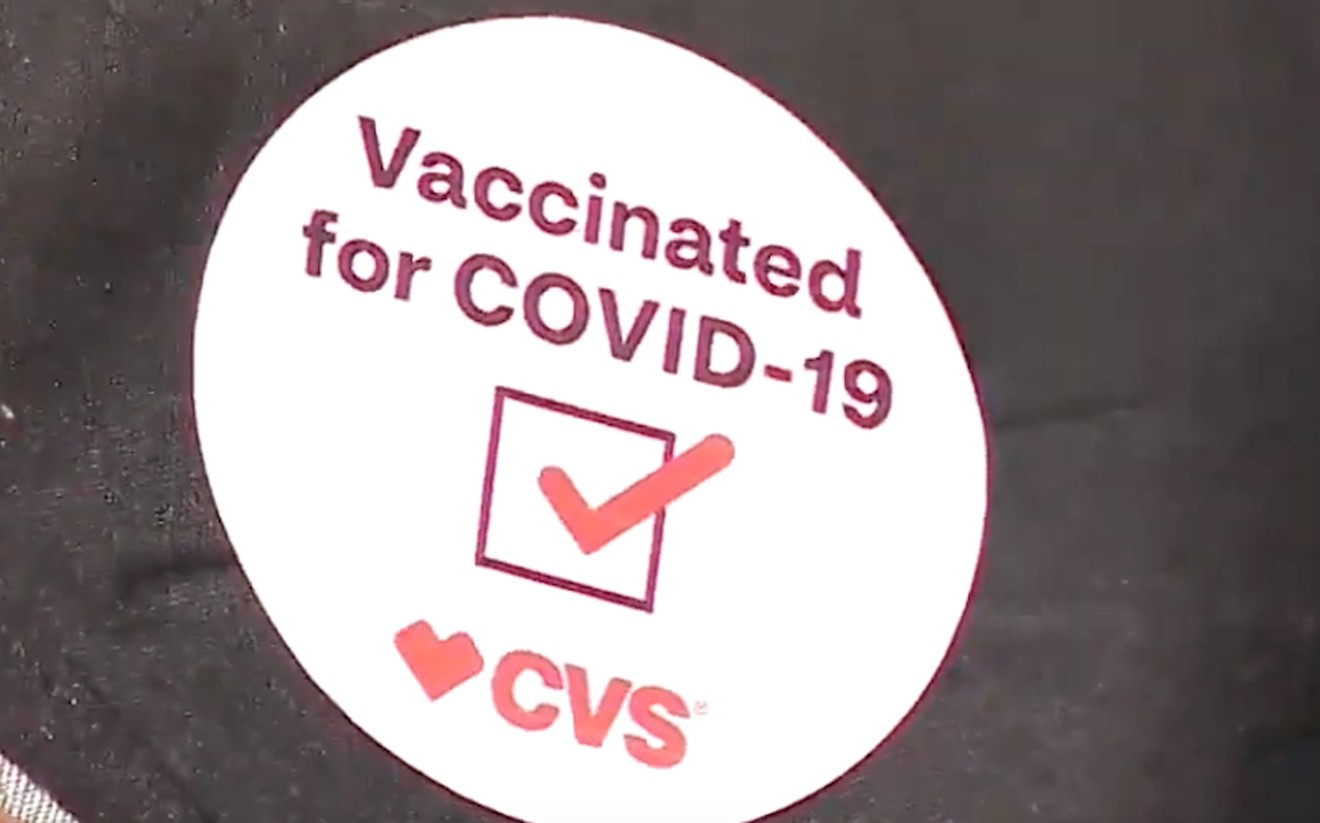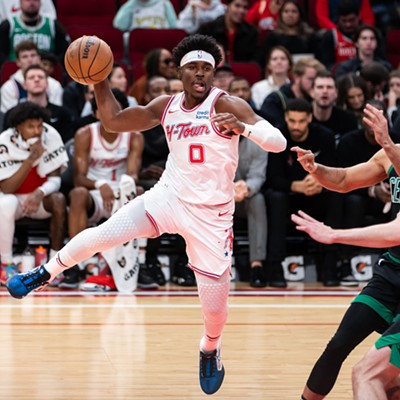Texas is entering into the spring season in a good spot in terms of the number of cases, emergency room visits, hospital admissions and deaths due to COVID-19, which are all steadily declining to some of the lowest numbers reported since the start of the pandemic over four years ago.
The statewide numbers reflect national trends shown in the U.S. Centers for Disease Control and Prevention's most recent data for the first week of April, which shows the country recorded the lowest number of deaths within a week in years: 266.
“We expect it to continue to be like this for a few months,” said Dr. Luis Ostrosky, chief of infectious diseases and epidemiology at UTHealth Houston. "We have traditionally seen an uptick in probably late summer or early fall after everybody’s starting to come back from vacation and everything.”
Ostrosky said people have built up immunity from COVID-19 vaccines and previous infections to the current variant in circulation, JN.1, a relative of BA.2.86 and an omicron subvariant.
Currently, two kinds of immunizations are available: an mRNA vaccine by Pfizer-BioNTech and Moderna and a protein subunit vaccine by Novavax. The primary difference between the two is that mRNA vaccines teach the body to create proteins needed to fend off the virus, while protein subunit vaccines already contain pieces of the virus.
However, the formula for all these vaccines was updated in September to a monovalent one based on XBB.1.5, another subvariant of the omicron family.
“We started to recommend these particular vaccines in September. I hope that most of the high-risk people would've gotten one [then],” Ostrosky said. “Then we heard recommendations from the CDC to consider a second dose if it had been at least four months since your vaccine, so that has already come and gone as well."
According to Dr. Hana El Sahly, professor of Molecular Virology & Microbiology at Baylor College of Medicine, uptake for these updated COVID-19 vaccines is slow among the general population but higher in older populations and others that need it the most.
The CDC recommends that people over 65 receive two doses of the updated vaccines, and those five years and older receive at least one dose. However, due to their vaccination history, this can vary per person.
Ostrosky said medical professionals are not hearing any more recommendations for an additional dose before fall but that this is subject to change.
Ostrosky added that the U.S. Food and Drug Administration and its advisers usually meet in May to determine what is in circulation in the Southern Hemisphere and use this information to formulate the flu vaccine for the next season.
They will use the same system to decide whether to modify the makeup of the COVID-19 vaccination. However, Ostrosky said it does not look like they will be making any changes to the current vaccine formula.
This is primarily because there are no emerging dominant variants. El Sahly noted that cases caused by JN.1’s subvariants, JN.1.13 and JN.1.18, have been slowly increasing over the past few weeks.
“We’ve learned to watch very closely what’s happening in South Africa and Europe,” Ostrosky said. When we start seeing activity there, or when we start seeing a particular variant emerging and taking over there, that’s our queue to prepare.”
“But, surveillance here in the United States has not shown any variant that’s predominantly taking over currently aside from JN.1,” Ostrosky added. “We’re in good shape as long as we don’t see the emergence of dramatically new variants.”
Those behind on getting their updated COVID-19 vaccine should be able to find it at their local CVS or Walgreens, depending on location and availability. These immunizations should be free for individuals enrolled in private insurance, Medicaid, Medicare Part B and Medicare Advantage Plans.
They should also be provided at these retail pharmacies at no cost to the uninsured or underinsured through the CDC's Bridge Access Program. Although COVID-19 vaccines are supposed to come free of charge, administrative fees, such as appointment costs, are sometimes included.
Mostly, the same coverage guidelines apply outside of CVS and Walgreens. Medicaid will continue to cover the costs of COVID-19 vaccinations and treatments — such as Paxlovid — through September 30, 2024. After this, coverage may vary per state.
Depending on a person's insurance, out-of-pocket expenses can add up for Paxlovid or other COVID-19 treatments like Molnupiravir, an antiviral medication used to treat early infection and prevent more severe symptoms of the virus.
If an individual’s health care insurance does not cover COVID-19 vaccines and they are unable to access these immunizations through a low- or no-cost service, they could pay more than $115 for one dose of these vaccines.
Ostrosky suggested strategically masking in crowded spaces as schools get out and early summer travel begins.
Another newer preventative measure is Pemgarda, a medication taken to prevent COVID-19. It is the only preventative medication currently available that blocks virus infection.
But, it is exclusively used for a small population of those at severe risk of illness from COVID-19, such as cancer patients or those who underwent a recent organ transplant.
“It is already FDA approved. Many health care systems in Houston are figuring out how to get it and where to use it,” Ostrosky added.
Support Us
Houston's independent source of
local news and culture
account
- Welcome,
Insider - Login
- My Account
- My Newsletters
- Contribute
- Contact Us
- Sign out
COVID-19 On Steep Decline, But Physicians Advise Public To Continue Vaccines
Faith Bugenhagen April 16, 2024 5:00AM

COVID-19 trends in Texas are hitting some of the lowest numbers seen since the start of the pandemic, but local health care professionals say protection is still necessary.
Screenshot
[
{
"name": "Related Stories / Support Us Combo",
"component": "11591218",
"insertPoint": "4",
"requiredCountToDisplay": "4"
},{
"name": "Air - Billboard - Inline Content",
"component": "11591214",
"insertPoint": "2/3",
"requiredCountToDisplay": "7"
},{
"name": "R1 - Beta - Mobile Only",
"component": "12287027",
"insertPoint": "8",
"requiredCountToDisplay": "8"
},{
"name": "Air - MediumRectangle - Inline Content - Mobile Display Size 2",
"component": "11591215",
"insertPoint": "12",
"requiredCountToDisplay": "12"
},{
"name": "Air - MediumRectangle - Inline Content - Mobile Display Size 2",
"component": "11591215",
"insertPoint": "4th",
"startingPoint": "16",
"requiredCountToDisplay": "12"
}
]
KEEP THE HOUSTON PRESS FREE...
Since we started the Houston Press, it has been defined as the free, independent voice of Houston, and we'd like to keep it that way. With local media under siege, it's more important than ever for us to rally support behind funding our local journalism. You can help by participating in our "I Support" program, allowing us to keep offering readers access to our incisive coverage of local news, food and culture with no paywalls.
Trending News
- Column: Opting Out of the STAAR Test Requires a Law Degree Or Iron Will
- HISD Scrambles As it Admits Its EOY Assessment Data is Wrong [UPDATED]
- Former Katy ISD Trustees Band Together To Support Two Trustees Running For Re-Election
-
Sponsored Content From: [%sponsoredBy%]
[%title%]

Don't Miss Out
SIGN UP for the latest
news, free stuff and more!
Become a member to support the independent voice of Houston
and help keep the future of the Houston Press FREE
Use of this website constitutes acceptance of our
terms of use,
our cookies policy, and our
privacy policy
The Houston Press may earn a portion of sales from products & services purchased through links on our site from our
affiliate partners.
©2024
Houston Press, LP. All rights reserved.





